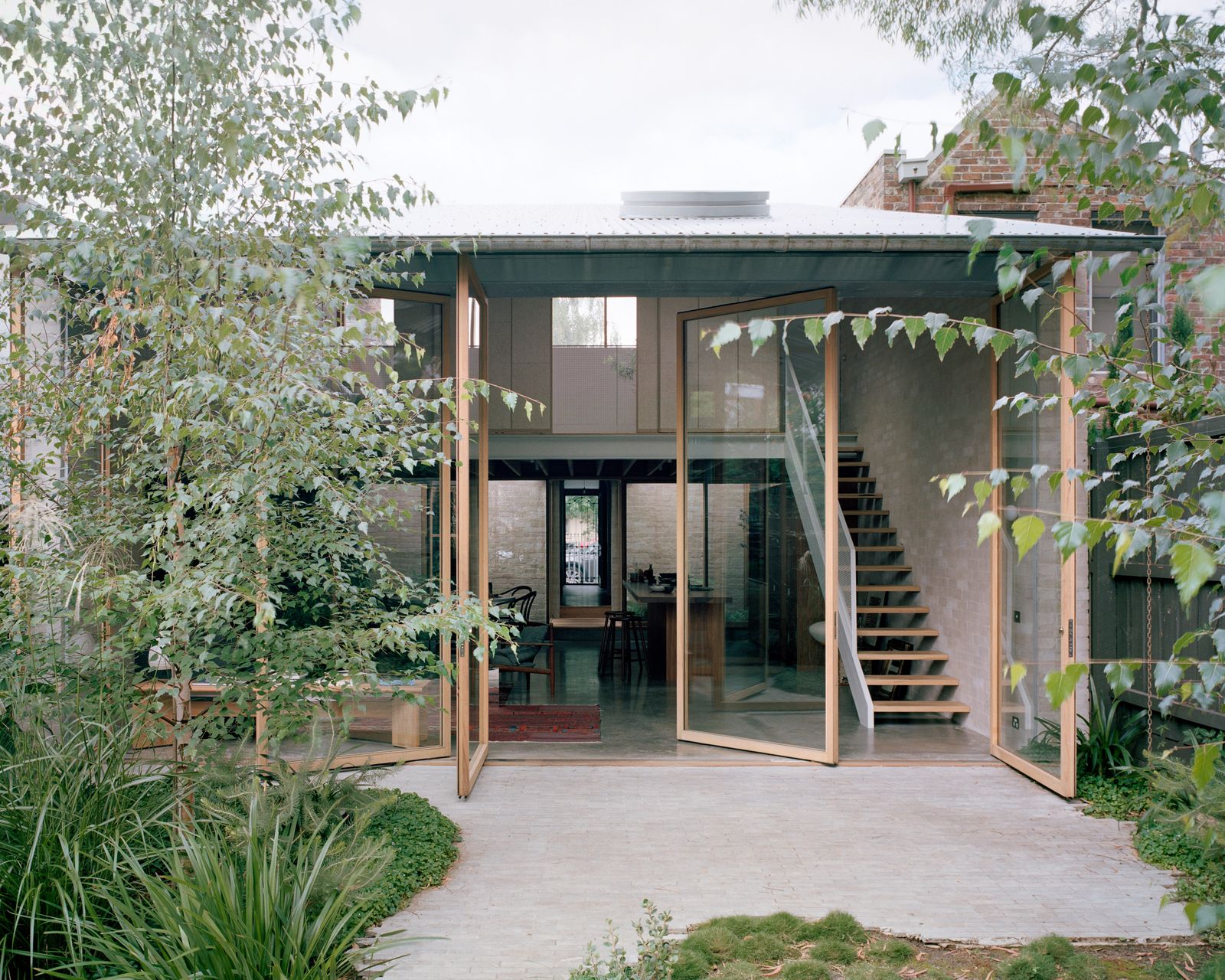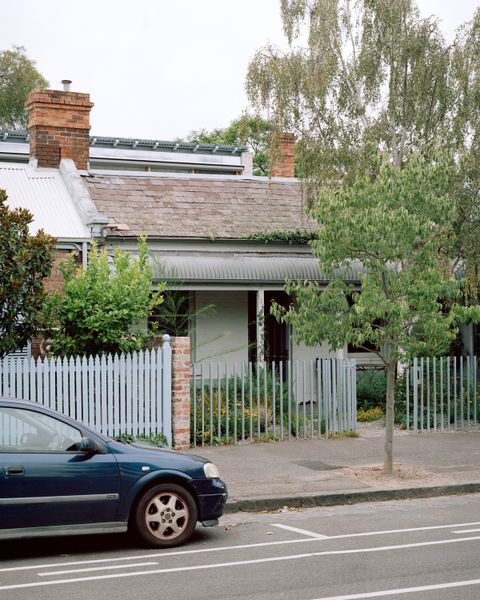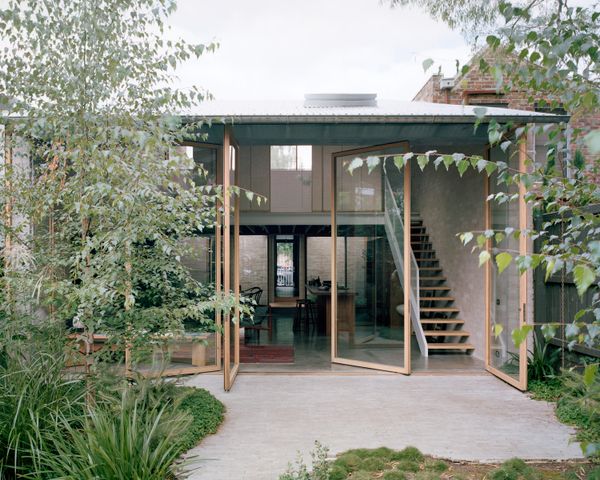A reimagined rear addition with living spaces and a mezzanine suite opens wide to a lush courtyard.

Houses We Love: Every day we feature a remarkable space submitted by our community of architects, designers, builders, and homeowners. Have one to share? Post it here.
Project Details:
Location: Carlton, Australia
Architect: Lovell Burton / @lovell_burton
Footprint: 1,938 square feet
Builder: Cale Peters Constructions
Structural Engineer: R.I. Brown
Landscape Design: Jala Studio
Photographer: Rory Gardiner / @arorygardiner
From the Architect: “Carlton Cottage sought to reimagine a tired single-story house on a small allotment into a new home for our young family. We resolved to address practical issues relating to water management, light quality, and thermal performance while taking cues from the existing cottage to arrange the home within its historical context. Intertwined with this pragmatism was an approach based on adaptability, regeneration, and an emphasis on spatial quality over material excesses.
“The site is situated at a low point of Carlton in what would have been a natural watercourse that fed into the Yarra River. The grain of European urbanization is primarily working class, typified by migrant communities, and consists of an eclectic mix of attached single dwellings. The site itself is characterized by Canning Street, revegetated as part of the MCC urban forest strategy, and a rear laneway that is defined by an old hat factory, presenting the site with two distinct interfaces. A mature river gum on the adjacent property creates a sheltered canopy over the site. The existing cottage had been modified over time, and was dark and dank.
“The site is arranged loosely into twelve squares. The existing cottage modified into a quadrant with kid’s beds, flexible study and wet areas. The new addition is loosely arranged over four squares with kitchen and living zones, and a flexible bedroom and bathroom on the mezzanine above. A courtyard separates the two areas, providing the lungs to the dwelling that assist with passively cooling the home through the summer. The rear garden is organized into a third quadrant, comprising a heavily gardened area for screening, terrace, play space, and outdoor dining. A series a pivot doors to the rear allow the facade to be manipulated between enclosure and openness. Relating to the overarching idea of a loose demarcation of spaces that is intended to adapt with our family and enables the home to be rearranged according to the seasons.
“In section the floor plane steps down the site to subtly demarcate zones, while a large skillion roof, acting in concert with the existing gable, encloses the new addition. The skillion assists in modifying the light quality into the site, redirect water for harvesting and nestles the new addition in with surrounding built form. Internally the skillion ceiling draws the eye upward to frame the sky, while bringing soft light into spaces below. A circular skylight frames the upper canopy of the river gum.
“In part, material selection was based on performance and upcycling. The existing slab to the cottage was removed and replaced with a lightweight framed floor to manage subfloor ventilation and moisture. The new timber floor consists of repurposed locally sourced hardwood framing. The existing bricks from the demolished lean-to were repurposed for new walls. A discarded stone slab from the Pilbara used for the benchtops. The kitchen, treated as a new piece of furniture, consists of a solid walnut designed to patina over time. In contrast to the business and grit of the surrounding streetscapes, Carlton Cottage seeks to create a repairing space. One that will adapt to the unknowns of raising children, while facilitating fluid and evolving relationships with each other, the community and the environment.”

Photo: Rory Gardiner

Photo: Rory Gardiner

Photo: Rory Gardiner
See the full story on Dwell.com: Four Massive Pivot Doors Bring the Outdoors In at This Australian Family Home
Related stories:
